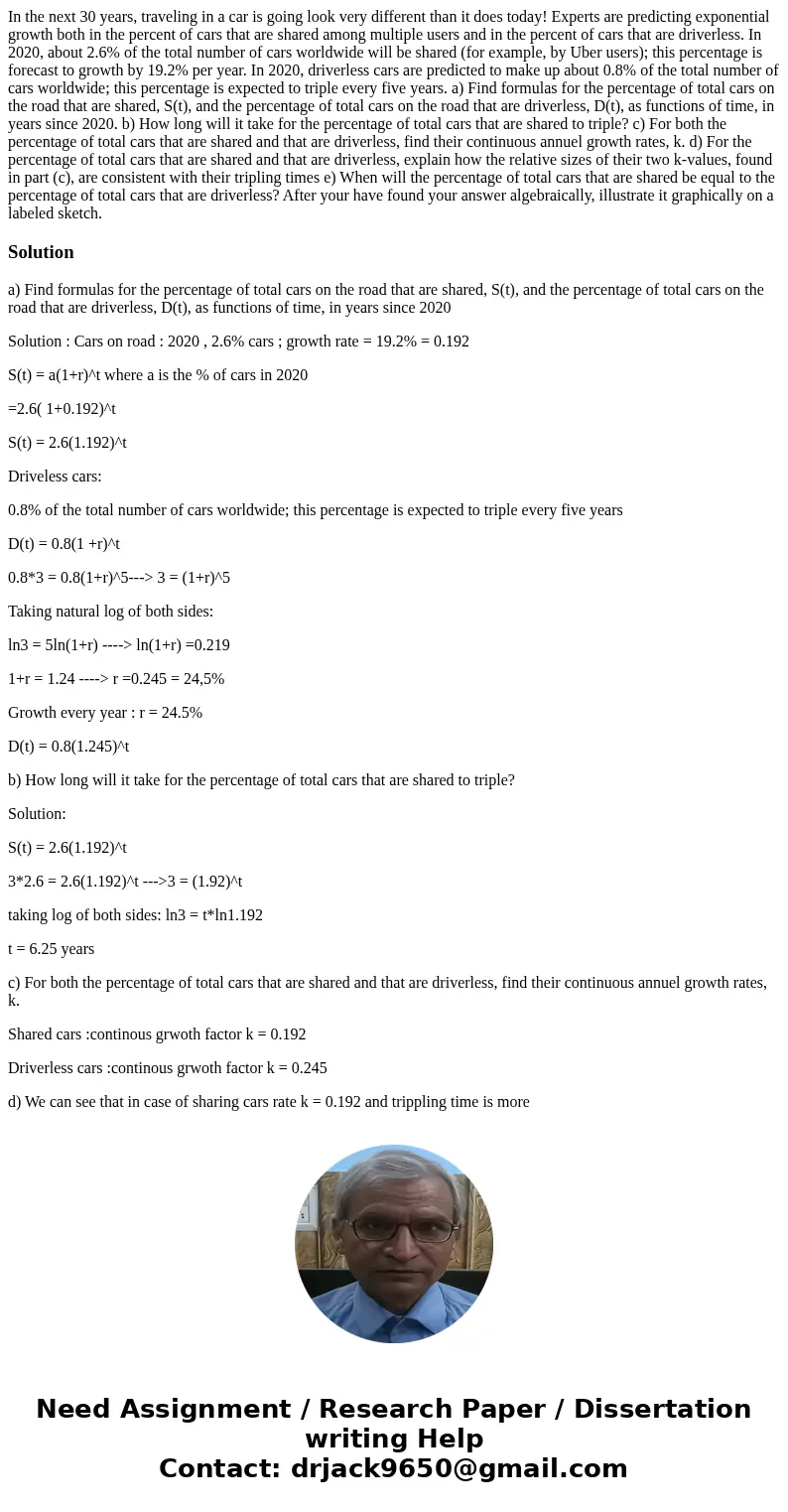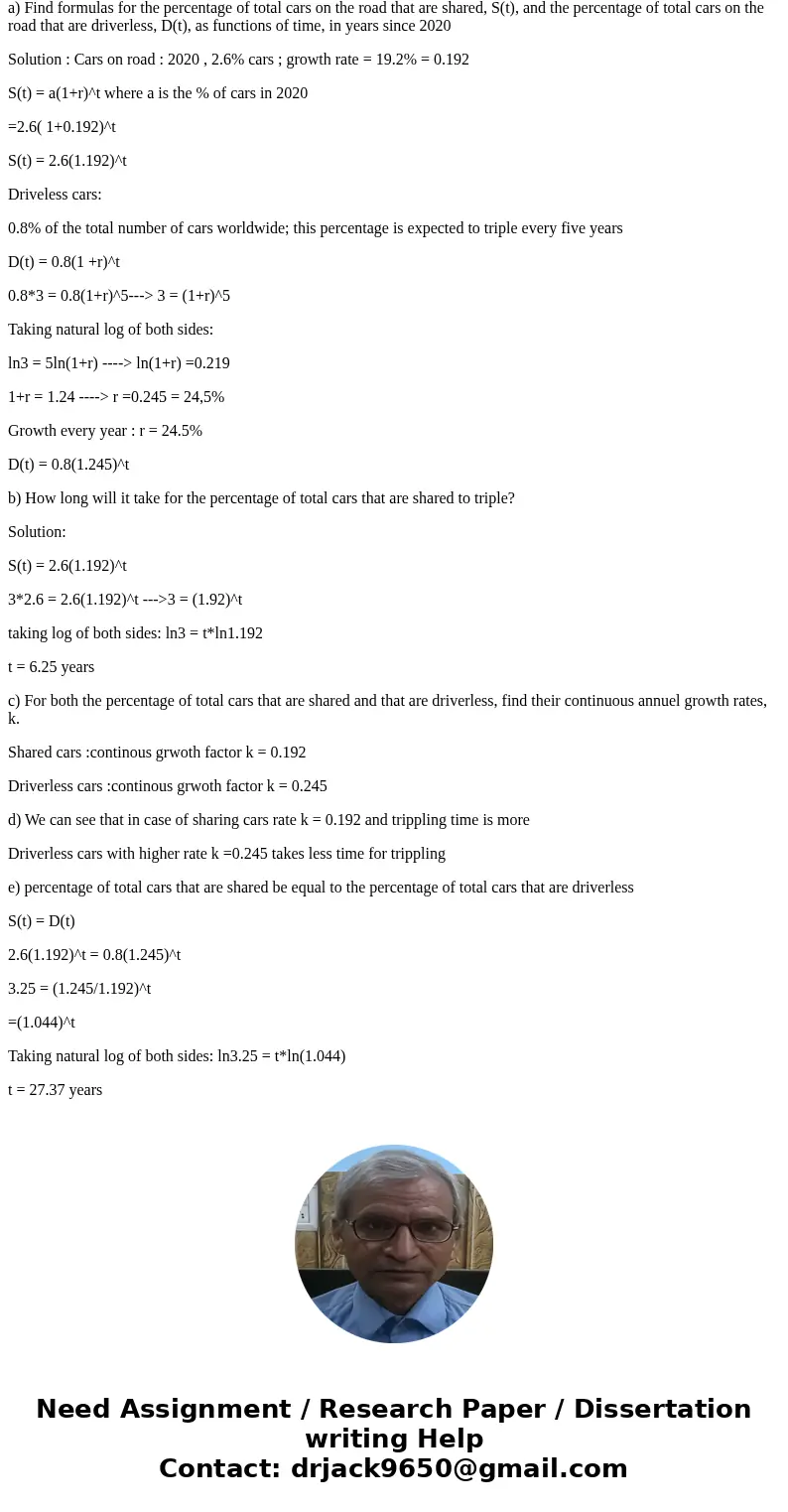In the next 30 years traveling in a car is going look very d
In the next 30 years, traveling in a car is going look very different than it does today! Experts are predicting exponential growth both in the percent of cars that are shared among multiple users and in the percent of cars that are driverless. In 2020, about 2.6% of the total number of cars worldwide will be shared (for example, by Uber users); this percentage is forecast to growth by 19.2% per year. In 2020, driverless cars are predicted to make up about 0.8% of the total number of cars worldwide; this percentage is expected to triple every five years. a) Find formulas for the percentage of total cars on the road that are shared, S(t), and the percentage of total cars on the road that are driverless, D(t), as functions of time, in years since 2020. b) How long will it take for the percentage of total cars that are shared to triple? c) For both the percentage of total cars that are shared and that are driverless, find their continuous annuel growth rates, k. d) For the percentage of total cars that are shared and that are driverless, explain how the relative sizes of their two k-values, found in part (c), are consistent with their tripling times e) When will the percentage of total cars that are shared be equal to the percentage of total cars that are driverless? After your have found your answer algebraically, illustrate it graphically on a labeled sketch.
Solution
a) Find formulas for the percentage of total cars on the road that are shared, S(t), and the percentage of total cars on the road that are driverless, D(t), as functions of time, in years since 2020
Solution : Cars on road : 2020 , 2.6% cars ; growth rate = 19.2% = 0.192
S(t) = a(1+r)^t where a is the % of cars in 2020
=2.6( 1+0.192)^t
S(t) = 2.6(1.192)^t
Driveless cars:
0.8% of the total number of cars worldwide; this percentage is expected to triple every five years
D(t) = 0.8(1 +r)^t
0.8*3 = 0.8(1+r)^5---> 3 = (1+r)^5
Taking natural log of both sides:
ln3 = 5ln(1+r) ----> ln(1+r) =0.219
1+r = 1.24 ----> r =0.245 = 24,5%
Growth every year : r = 24.5%
D(t) = 0.8(1.245)^t
b) How long will it take for the percentage of total cars that are shared to triple?
Solution:
S(t) = 2.6(1.192)^t
3*2.6 = 2.6(1.192)^t --->3 = (1.92)^t
taking log of both sides: ln3 = t*ln1.192
t = 6.25 years
c) For both the percentage of total cars that are shared and that are driverless, find their continuous annuel growth rates, k.
Shared cars :continous grwoth factor k = 0.192
Driverless cars :continous grwoth factor k = 0.245
d) We can see that in case of sharing cars rate k = 0.192 and trippling time is more
Driverless cars with higher rate k =0.245 takes less time for trippling
e) percentage of total cars that are shared be equal to the percentage of total cars that are driverless
S(t) = D(t)
2.6(1.192)^t = 0.8(1.245)^t
3.25 = (1.245/1.192)^t
=(1.044)^t
Taking natural log of both sides: ln3.25 = t*ln(1.044)
t = 27.37 years


 Homework Sourse
Homework Sourse